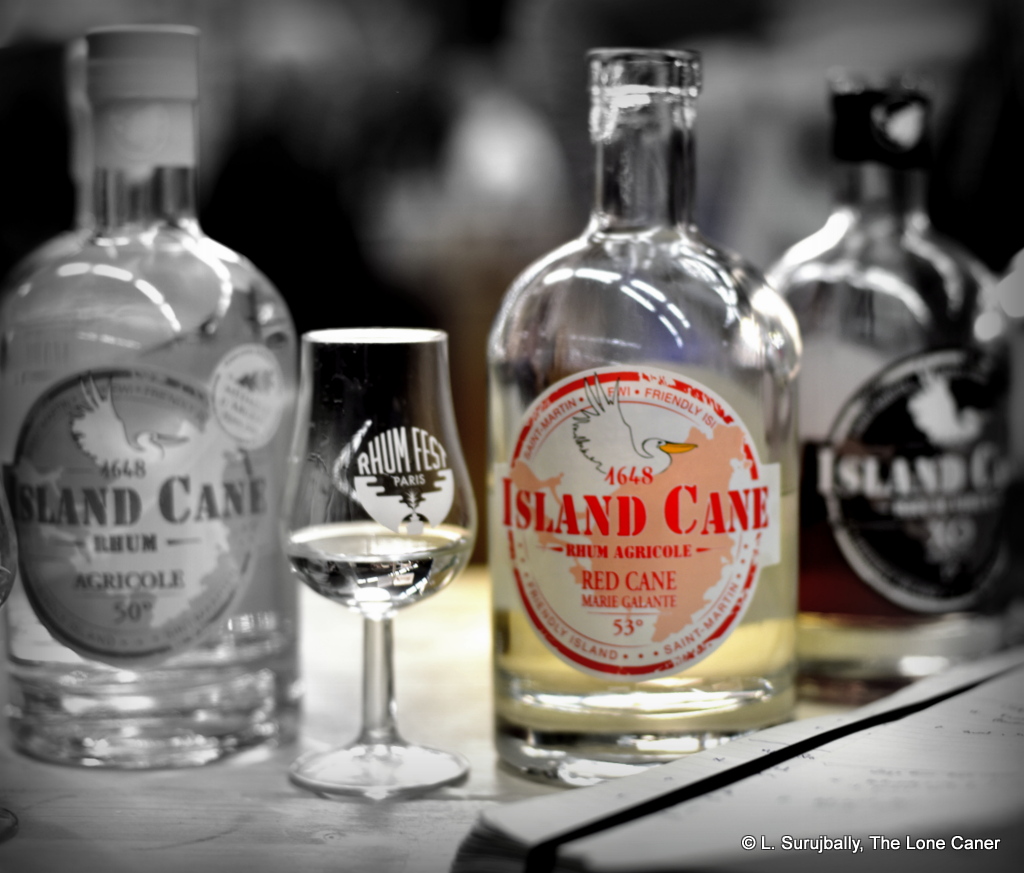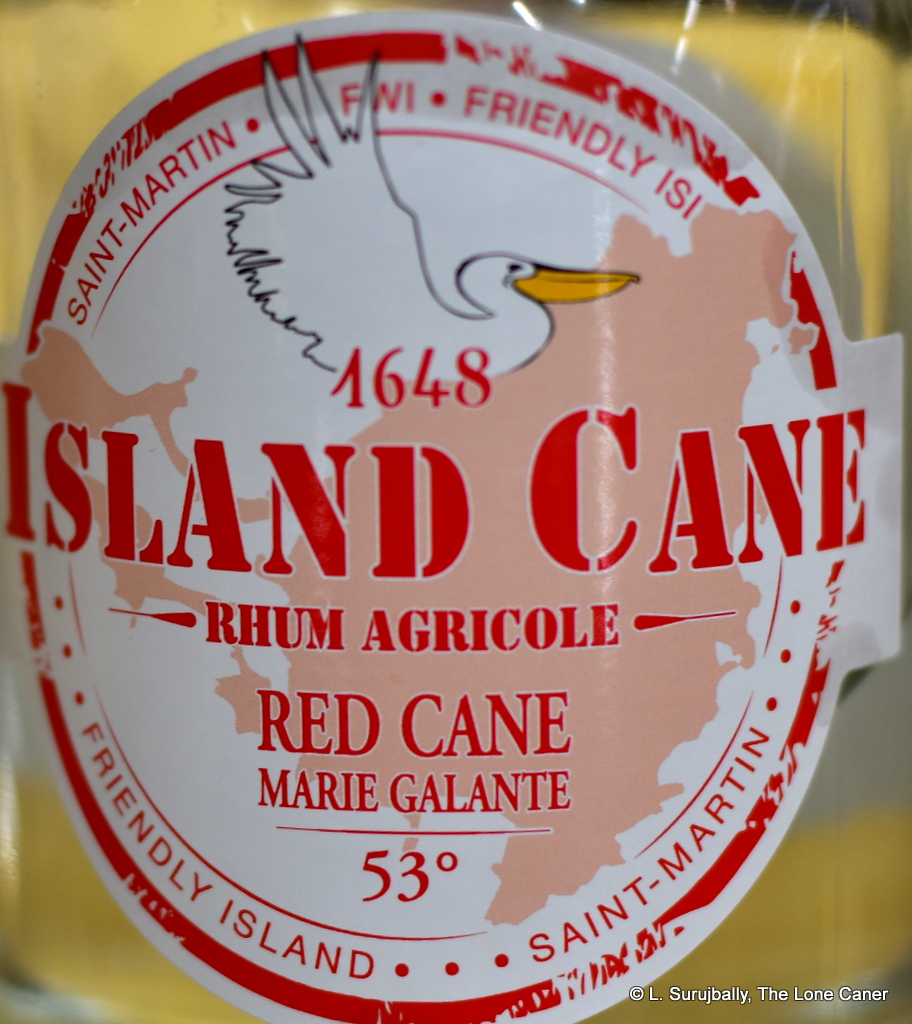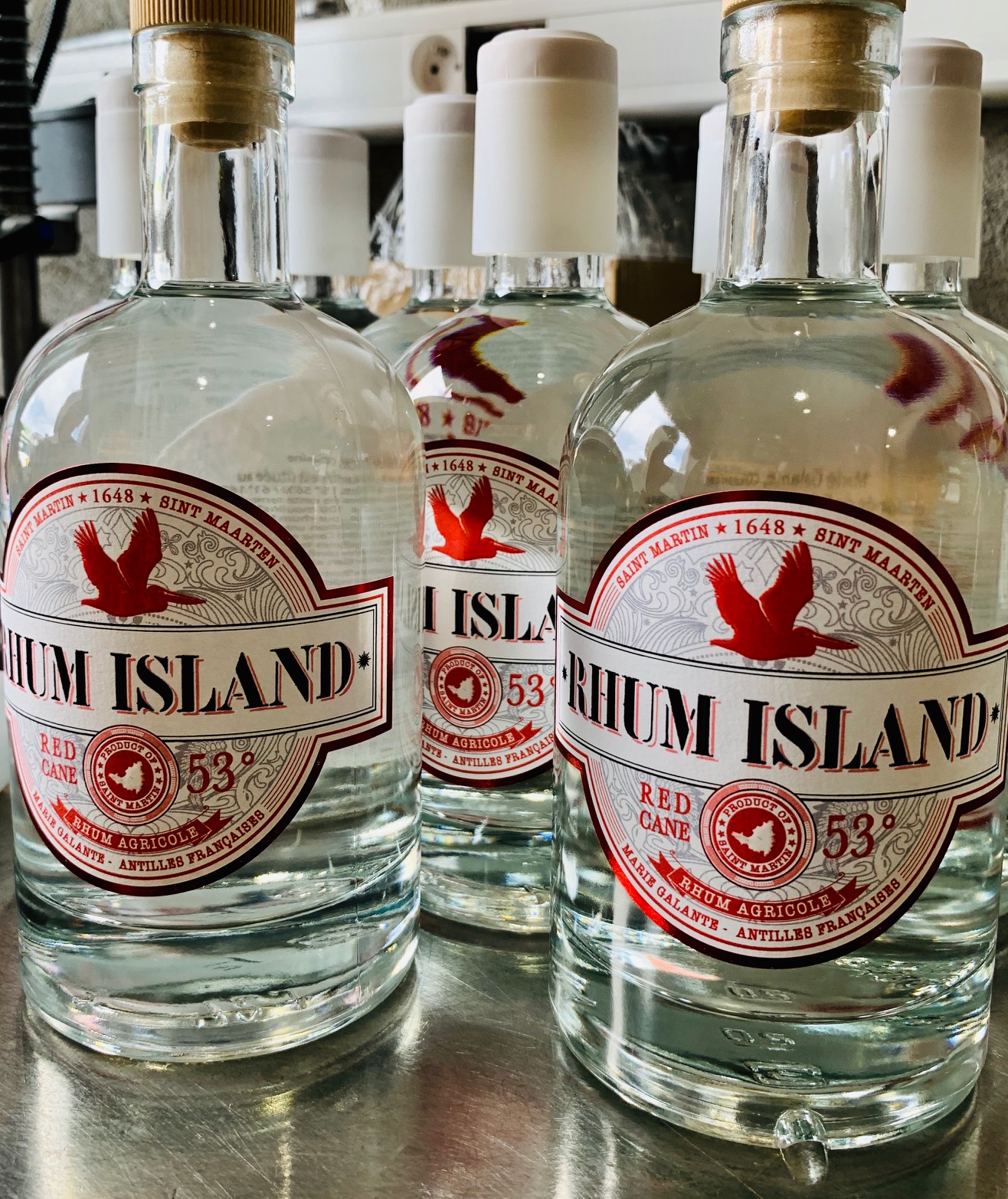
It’s when you sniff this understated and really quite excellent agricole from Marie Galante that you gain some sense of how well made both it and the green labelled “standard” blanc 50º are. The Green Label — my term, not theirs — was good and I really liked it, but this one was a few degrees stronger and a few degrees better and makes a good case for both the utilization of specific cane varietals and a single source of origin.
Briefly, Rhum Island – a company founded in 2017 – issues rhums which are bottled in Saint Martin (a small island south of Anguilla shared by Holland and France, which has no sugar industry to speak of), sourced from distilleries on Guadeloupe and Marie Galante (it varies depending on the bottling). Whether it comes from Bielle, Pere Labat (Poisson), Capovilla or Bellevue (in this case), is anyone’s guess – as I noted, the guys at the booth who kept filling my glass kept that close to their vests. Perhaps it was/is the distilleries themselves who were shyly demure about their names being used by what is, at end, another indie bottler, albeit from the Caribbean itself.
In short, however, the marketing blurb tells us that the rhum comes from “red cane”, and is meant to be pure agricultural monovarietal white rhum, initially distilled on column stills at 78% ABV and gradually reduced to 53% ABV, with no additives, no filtration and no ageing.
 All that comes together in a rhum of uncommonly original aroma and taste. It opens with smells that confirm its provenance as an agricole, and it displays most of the hallmarks of a rhum from the blanc side (herbs, grassiness, crisp citrus and tart fruits)…but that out of the way, evidently feels it is perfectly within its rights to take a screeching ninety degree left turn into the woods. Woody and even meaty notes creep out, which seem completely out of place, yet somehow work. This all combines with salt, rancio, brine, and olives to mix it up some more, but the overall effect is not unpleasant – rather it provides a symphony of undulating aromas that move in and out, no single one ever dominating for long before being elbowed out of the way by another.
All that comes together in a rhum of uncommonly original aroma and taste. It opens with smells that confirm its provenance as an agricole, and it displays most of the hallmarks of a rhum from the blanc side (herbs, grassiness, crisp citrus and tart fruits)…but that out of the way, evidently feels it is perfectly within its rights to take a screeching ninety degree left turn into the woods. Woody and even meaty notes creep out, which seem completely out of place, yet somehow work. This all combines with salt, rancio, brine, and olives to mix it up some more, but the overall effect is not unpleasant – rather it provides a symphony of undulating aromas that move in and out, no single one ever dominating for long before being elbowed out of the way by another.
The palate is crisp and clean and invites one to keep sipping and tasting to see what else can be wrung out, what else can be discovered. If you can believe it, it’s even more interesting than the nose – deeper somehow, more forceful and assertive, making the point less with a smorgasbord of flavours or sharp stabs to the glottis (though both are definitely present), than a sort of firm and complex strength. There were tastes of lemon custard, salt-pimento-flavoured chocolate, sweet herbs like fennel and rosemary, 7-up, candy floss and crushed walnuts and a nice medley of green apples, citrus peel, grapes, and yellow mangoes, around which flitted occasional minerally notes, olives, salt, sweet soya, and at no time, in spite of the strength, does it lose the peculiar delicacy that had also marked its brother. I also enjoyed the finish, which was long and aromatic, leaving behind the memory of bitter chocolate, grass, sugar cane sap, salt, and a herbal vegetable soup and with sweet cane vinegar.
In short, I thought this was a really fantastic white rhum. As I remarked above, it doesn’t say from which plantation / estate on Marie Galante it hails, but my own feeling is that it is not a blend – the tasting coordinates dial in too precisely, it’s too lacking in the smooth, carefully-mixed, please-all-comers anonymity to be a blend, and in any case, what are the chances that a single varietal’s cane is harvested at the same time, crushed to juice at the same time, on multiple estates, and then brought together to form a blend? No, I’m suggesting this is one estate’s rhum, and I wish I knew which one it was, because it’s one damned fine white rhum, affordable and right tasty, and I really want some more. It’s a blanc rhum to treasure.
(#777)(87/100)
Other Notes
- The label shown above was changed shortly after April 2019, and the new version looks like this:

Photo provided courtesy of Rhum Island
The Reimonenq distillery is located on the island of Basse-Terre, not Marie-Galante.
Already corrected by the time your note came in 🙂